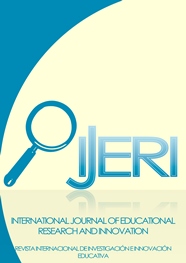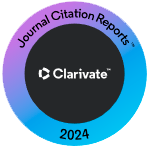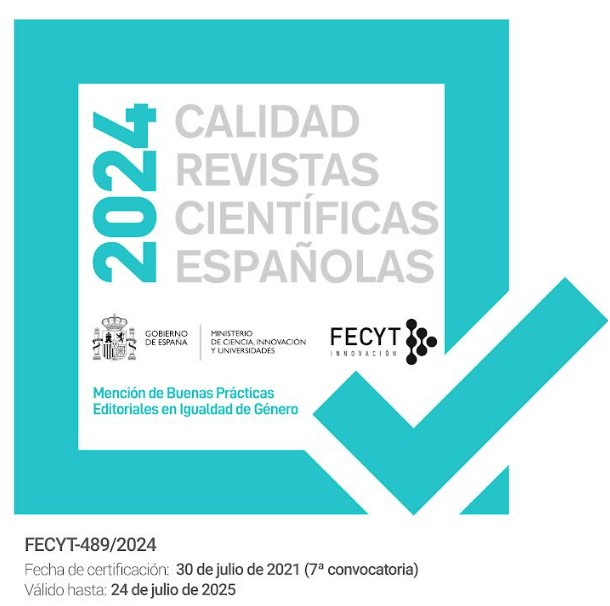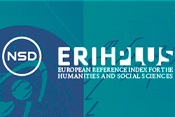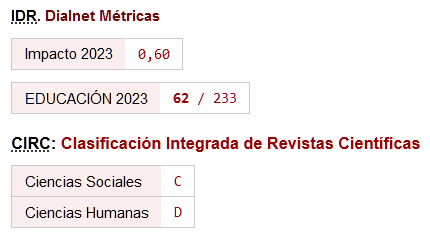What does literature teach about digital pathology? A bibliometric study in Web of Science
DOI:
https://doi.org/10.46661/ijeri.4918Keywords:
bibliometric analysis, digital pathology, scientific mapping, scientific production, web of scienceAbstract
Digital pathology (DIPA) has become an effective discipline that generates a graphic environment to diagnose and interpret the pathological information of people. When analyzing the existing literature on DIPA, a knowledge gap was produced by not reporting a study that has bibliometrically analyzed the publications on the subject. The objective of this study is to analyze the scientific production and performance achieved by the term digital pathology in the Web of Science (WoS) database. For this, a methodology based on bibliometrics has been carried out, complemented by the scientific mapping technique to search, recorder, analyze and predict the scientific literature on the state of question. We have worked with an analysis unit of 1222 documents reported from WoS database. The results show that there is no research topic in the field of study of DIPA that stands out from the rest. A conceptual gap can be observed in the thematic development, given that there is no theme that is repeated in all periods, where the connections are more thematic than conceptual. There are key documents for different topics. The main themes have been very different over the years like telepathology and artificial intelligence.
Downloads
References
Begley, C.G., & Ellis, L.M. (2012). Raise standards for preclinical cancer research. Nature, 483, 531–533.
Benke, K., & Benke, G. (2018). Artificial Intelligence and Big Data in Public Health. International Journal of Environmental Research and Public Health, 15(12), 1-9. http://doi.org/10.3390/ijerph15122796
Bizzego, A., Bussola, N., Chierici, M., Maggio, V., Francescatto, M., Cima, L… Furlanello, C. (2019). Evaluating reproducibility of AI algorithms in digital pathology with DAPPER. PLoS computational biology, 15(3), 1-24. https://doi.org/10.1371/journal.pcbi.1006269
Corredor, G., Whitney, J., Arias, V., Madabhushi, A., & Romero, E. (2017). Training a cell-level classifier for detecting basal-cell carcinoma by combining human visual attention maps with low-level handcrafted features. Journal of Medical Imaging, 4(2), 1-15. https://doi.org/10.1117/1.JMI.4.2.021105
Fauzi, M.F.A., Chen, W., Knight, D., Hampel, H., Frankel, W.L., & Gurcan, M.N. (2019). Tumor Budding Detection System in Whole Slide Pathology Images. Journal of Medical System, 44(38), 1-10.
Holliday, D.L., & Speirs, V. (2011). Choosing the right cell line for breast cancer research. Breast Cancer Research, 13(4), 1-7. https://doi.org/10.1186/bcr2889
Hsieh, W.-H., Chiu, W.-T., Lee, Y.-S., & Ho, Y.-S. (2004). Bibliometric analysis of Patent Ductus Arteriosus treatments. Scientometrics, 60, 105–215.
Klimov, S., Miligy, I.M., Gertych, A., Jiang, Y., Toss, M.S., Rida, P… Aneja, R. (2019) A whole slide image-based machine learning approach to predict ductal carcinoma in situ (DCIS) recurrence risk. Breast Cancer Research, 21(1), 1-19. https://doi.org/10.1186/s13058-019-1165-5
López-Belmonte, J., Segura-Robles, A., Moreno-Guerrero, A.J., & Parra-González, M.E. (2020). Machine Learning and Big Data in the Impact Literature. A Bibliometric Review with Scientific Mapping in Web of Science. Symmetry, 12(2), 1-15. https://doi.org/10.3390/sym12040495
López-Belmonte, J., Moreno-Guerrero, A.J., López-Núñez, J.A., & Pozo-Sánchez, S. (2019). Analysis of the Productive, Structural, and Dynamic Development of Augmented Reality in Higher Education Research on the Web of Science. Applied Science, 9(24), 1-21. https://doi.org/10.3390/app9245306
Lugli, A., Kirsch, R., Ajioka, Y., Bosman, F., Cathomas, G., Dawson, H… Quirke, P. (2017). Recommendations for reporting tumor budding in colorectal cancer based on the International Tumor Budding Consensus Conference (ITBCC) 2016. Modern Pathology, 30(9), 1299–1311. https://doi.org/10.1038/modpathol.2017.46
Majo, J., Klinkhammer, B.M., Boor, P., & Tiniakos, D. (2019). Pathology and natural history of organ fibrosis. Current Opinion in Pharmacology, 49, 82-89. https://doi.org/10.1016/j.coph.2019.09.009
Moreno-Guerrero, A.J., Gómez-García, G., López-Belmonte, J., & Rodríguez-Jiménez, C. (2020). Internet Addiction in the Web of Science Database: A Review of the Literature with Scientific Mapping. International Journal of Environmental Research and Public Health, 17(8), 1-17. https://doi.org/10.3390/ijerph17082753
Mukundan, R. (2019). Analysis of Image Feature Characteristics for Automated Scoring of HER2 in Histology Slides. Journal of Imaging, 5(3), 1-12. https://doi.org/10.3390/jimaging5030035
Naylor, P., Laé, M., Reyal, F., & Walter, T. (2018). Segmentation of nuclei in histopathology images by deep regression of the distance map. IEEE transactions on medical imaging, 38(2), 448-459. https://doi.org/10.1109/TMI.2018.2865709
Norazman, S.H.B., Nakamura, T., Kimura, F., & Yamaguchi, M. (2019). Analysis of quantitative phase obtained by digital holography on H&E-stained pathological samples. Artificial Life and Robotics, 24(1), 38-43. https://doi.org/10.1007/s10015-018-0468-4
Patra, S.K., Bhattacharya, P., & Verma, N. (2006). Bibliometric Study of Literature on Bibliometrics. DESIDOC Journal of Library & Information Technology, 26(1), 27–32. https://doi.org/10.14429/djlit.26.1.3672
Rodríguez-García, A.M., López-Belmonte, J., Agreda, M., & Moreno-Guerrero, A.J. (2019) Productive, Structural and Dynamic Study of the Concept of Sustainability in the Educational Field. Sustainability, 11(20), 1-12. https://doi.org/10.3390/su11205613
Saxena, P., & Goyal, A. (2019). Study of Computerized Segmentation & Classification Techniques: An Application to Histopathological Imagery. Journal of Computing and Informatics, 43(4), 561-572. https://doi.org/10.31449/inf.v43i4.2142
Tavolara, T.E., Khan, M.K., Arole, V., Chen, W., Frankel, W., & Gurcan, M.N. (2019) A modular cGAN classification framework: Application to colorectal tumor detection. Scientific Reports, 9, 1-8.
Williams, B.J., Bottoms, D., Clark, D., & Treanor, D. (2019). Future-proofing pathology part 2: building a business case for digital pathology. Journal of clinical pathology, 72(3), 198-205. https://doi.org/10.1136/jclinpath-2017-204926
Zaidi, M., Fu, F., Cojocari, D., McKee, T.D., & Wouter, B.G. (2019). Quantitative Visualization of Hypoxia and Proliferation Gradients Within Histological Tissue Sections. Frontiers in Bioengineering and Biotechnology, 7, 1-9. https://doi.org/10.3389/fbioe.2019.00397
Zwanenburg, A., Vallières, M., Abdalah, M.A., Aerts, H.J.W.L., Andrearczyk, V., Ashrafinia, S…, Löck, S. (2020) The Image Biomarker Standardization Initiative: Standardized Quantitative Radiomics for High-Throughput Image-based Phenotyping. Radiology, 295(2), 1-16. https://doi.org/10.1148/radiol.2020191145
Downloads
Published
How to Cite
Issue
Section
License
Copyright (c) 2021 Jesús López-Belmonte, Adrián Segura-Robles, William C. Cho, María-Elena Parra-González, Antonio-José Moreno-Guerrero

This work is licensed under a Creative Commons Attribution-NonCommercial-NoDerivatives 4.0 International License.

